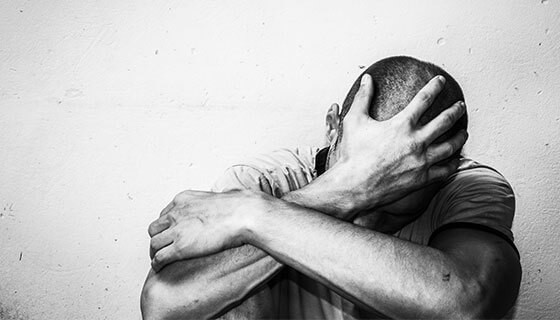
September is suicide awareness month. The topic of suicide is something that needs artists’ involvement and conversations so as to reduce the precedence of its scourge.
Unfortunately, our society often paints suicide the way they would a prison sentence and they make it a permanent situation that brands an individual.
However, suicidal ideation is not a brand or a label, it is a sign that an individual is suffering deeply and must seek treatment. And it is falsehoods like these that can prevent people from getting the help they need to get better.
Debunking the common myths associated with suicide can help society realise the importance of helping others to seek treatment and show individuals the importance of addressing their mental health challenges.
Tragically, many notable musicians have died by suicide. Some may have killed themselves as a result of depression or other complex health issues, which is why it is important to be aware of the warning signs. A few of these tragedies have even inspired conspiracy theories, making some wonder if they were cover-ups for foul play.
When I think of famous musicians who died by suicide, Kurt Cobain probably comes to mind. The Nirvana frontman killed himself in 1994. The rocker is referred to as part of the "27 club," among other beloved musicians who died at the young age of 27.
Linkin Park's Chester Bennington took his own life at his California home in 2017, on the birthday of Chris Cornell, the lead singer of Soundgarden and Audioslave and a close friend. Cornell had perished in the same manner only two months earlier. There are unfortunately a large number of artists in Africa who have also fallen victim to the scourge of suicide.
It may be surprising that so many famous artists have died by suicide; indeed, rates are rising across the globe and also in Zimbabwe because of drug induced behaviors, but treatments for the underlying causes are advancing.
- Letters: Africa must make use of its resources
- ‘Let’s take suicide seriously’
- Pupil commits suicide over satanism taunt
- Healing our own form of bronchitis
Keep Reading
In as much as mental health and suicide affects everyone, it seems more men are prone to committing suicide as compared to females.
The same applies in the arts sector; more male artistes seem to be ready to take their own lives compared to their female counterparts.
The statistics and research show the gender differences in suicide as men have a higher likelihood to actually take their own lives.
Mental health pressure doubles for artistes because artistes thrive on perceptions, ego and the fact that artistes enjoy being pampered and being at the center of the stage and everyone looks at them and thinks they have arrived or achieved so much in life.
This creates mental pressure which can have a strain and in the end lead to the precedence of suicidal ideations and actions.
Society has seen artists as individuals who are incapable of committing suicide because they are always surrounded by glitz and glamor and hence portray the image of being complete and happy.
In our social media generation the need to impress has been a factor that has a toll especially on artists. Many artists are pushed to live a very fake life in extravagance so as to keep projecting an image which in many cases becomes a problem that pushes them to suicide when they fail to fulfill the expectations.
I believe in the power of art as a therapeutic tool that can be used in the release of stress and the deeper emotions.
Through creative expression, art therapy facilitates self-awareness, regulation, and resilience. Meanwhile, we use art as a tool to reduce stress and anxiety, among other things.
We can help calm and redirect suicidal individuals if we introduce self-soothing and sensory-based experiences and help identify specific and tangible coping mechanisms and activities to decrease anxiety.
Sometimes it takes the right music or painting the right picture to express those feelings. Sometimes when we have depression or anxiety or the other symptoms that are leading us to be suicidal, we experience trouble focusing and being motivated, and music or any art form can really help the brain to focus and motivate it on what it needs to do.
Art forms like music, for example, can control our heart rate, it can help blood pressure, all of our vital signs, it can reduce stress, and the beauty of it is it’s very adaptable and very individualized.
Music and art have so many health benefits and so many positive things as they have no pressure.
Art and music remind people to have meaning in their lives and that they are giving back through that medium.
Music and art therapy have so much benefit and so many good outcomes from people with any mental health, but definitely patients with depression, anxiety, and suicidal thoughts and I definitely think it has had a lot of positive outcomes.
There is a widespread stigma associated with suicide and as a result, many people are afraid to speak about it. Talking about suicide not only reduces the stigma, but also allows individuals to seek help, rethink their opinions and share their story with others. We all need to talk more about suicide.
Debunking these common myths about suicide can hopefully allow individuals and especially the artists and wider community to look at suicide from a different angle - one of understanding and compassion for an individual who is internally struggling.
Maybe they are struggling with a mental illness or maybe they are under extreme pressure and do not have healthy coping skills or a strong support system.
As a society, we should not be afraid to speak up about suicide, to speak up about mental illness or to seek out treatment for an individual who is in need. Eliminating the stigma starts by understanding why suicide occurs and advocating for mental health awareness within our communities.
There are suicide hotlines, mental health support groups, online community resources and many mental health professionals who can help any individual who is struggling with unhealthy thoughts and emotions.
Artists have a role in enlightening the society on the issues of suicide. Artists have to also use the power of their art as a therapeutic tool that can help communities in coping with situations of distress. There is need for combined partnership with government and civic society to help the wider locale with resources and mental health services that can help people with suicidal tendencies.
- Raymond Millagre Langa is a musician, orator, writer and the founder of Indebo Edutainment Trust Follow Millagre Ray Langa on Facebook #Millagre Ray L, e-mail [email protected]. You can reach out to Indebo Edutainment Trust on Facebook, Instagram and Twitter [email protected]










